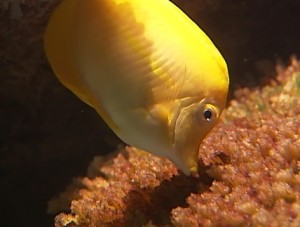Some exciting news for fishery stocks was circulated by the University of Hawaii recently.
Marine ecologists from Hawaii, Oregon and Washington have discovered for the first time that fish stocks can be replenished by tiny fish larvae originating from marine reserves more than 100 miles away.
UH-Hilo Marine Science Professor Jim Beets – who co-authored the study published in the scientific journal PLoS One – said their work should help answer some of the questions about the ability of marine reserves to help rebuild fisheries.
Beets co-authored the research with former UH Hilo Associate Professor Brian Tissot, now with Washington State University in Vancouver.
Conducting genetic and statistical analysis on nearly 1,100 juvenile and adult fish, researchers found evidence that several healthy juvenile fish were spawned from parents up to 114 miles away, including some from protected marine areas.
The university provided this media release with more details:
Marine ecologists from Hawaiʻi, Oregon and Washington have discovered for the first time that fish stocks can be replenished by tiny fish larvae originating from marine reserves more than 100 miles away. Their research, conducted in Hawaiʻi and published in the scientific journal PLoS One, also highlighted the ability of marine reserves to rebuild fishery stocks in areas outside the reserves.
“This study should help answer some of the questions about the ability of marine reserves to help rebuild fisheries,” said University of Hawaiʻi at Hilo Marine Science Professor Dr. Jim Beets, who co-authored the research with former UH Hilo Associate Professor Brian Tissot, now with Washington State University in Vancouver. “It should also add scientific precision to the locating of reserves for that purpose, which is just one of many roles that a marine reserve can play.”
The findings were based on the creation of nine marine protected areas along the Big Island’s Kona Coast in 1999 in response to the alarming decline of a tropical fish known as yellow tang, which threatened an important species in the aquarium trade industry. In just 10 years, the newly created marine reserves helped reverse the fortunes of the fishery which had been facing declines.
Researchers were able to confirm the larval fish dispersal using genetic approaches (similar to DNA fingerprinting) and sophisticated statistical analysis developed by Mark Christie, an Oregon State University postdoctoral research associate and the study’s lead author. Following field research in 2006, the scientists performed genetic and statistical analysis on nearly 1,100 juvenile and adult fish, which found evidence that several healthy juvenile fish were spawned from parents up to 114 miles away, including some from protected marine areas.
Scientists already knew that marine reserves will grow larger fish and that some will spillover and leave their specific area. But the Hawaiʻi study breaks new ground by providing the first direct observation that successful marine reserves can potentially sustain fisheries a large distance beyond their borders. Beets believes the significance of the study’s findings go beyond addressing lingering skepticism about marine reserves.
“The identification of connectivity of fishes between distant reefs on the Island of Hawaiʻi demonstrates that human coastal communities are also linked,” Beets said. “So management in one part of the ocean affects people who use another part of the ocean.”
The study was conducted in collaboration with the University of Hawaiʻi, Oregon State University, Washington State University, National Marine Fisheries Service and Hawaiʻi’s State Department of Land and Natural Resources and funded by Conservation International.


by Big Island Video News2:34 pm
on at
STORY SUMMARY
By Stephanie Salazar Some exciting news for fishery stocks was circulated by the University of Hawaii recently. Marine ecologists from Hawaii, Oregon and Washington have discovered for the first time that fish stocks can be replenished by tiny fish larvae originating from marine reserves more than 100 miles away. UH-Hilo Marine Science Professor Jim Beets […]